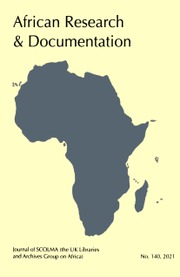Article contents
Social Media and Social Transformation in Uganda's Families
Published online by Cambridge University Press: 25 April 2022
Extract
Social media applications have become increasingly popular components of our everyday lives in today's globalising society. Social media provide a context where people across the world can communicate, exchange messages, share knowledge, and interact with each other regardless of the distance that separates them (Sawyer, 2011). Technological developments the world over have made the internet an innovative way for individuals and families to communicate. Family members use social media sites such as Facebook, Twitter, and Myspace to create and sustain relationships (Boyd and Ellison,. 2007). These social media sites let those who use them create personal profiles, while connecting with other users of the sites; users can upload photographs, post what they are doing at any given time, and send personal or public messages to whomever they choose. In this “information age,” social media sites seem to be growing rapidly in popularity, especially among young adults (Pempek, Yermolayeva, & Calvert, 2008).
Information
- Type
- Other Articles
- Information
- Copyright
- Copyright © International African Institute 2016
References
- 1
- Cited by

